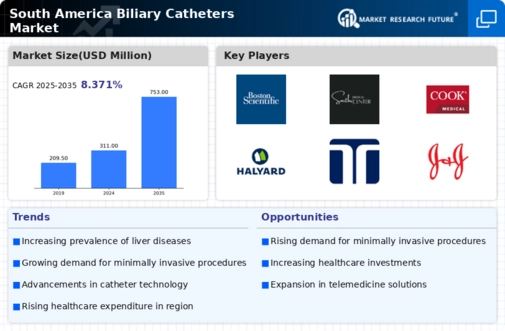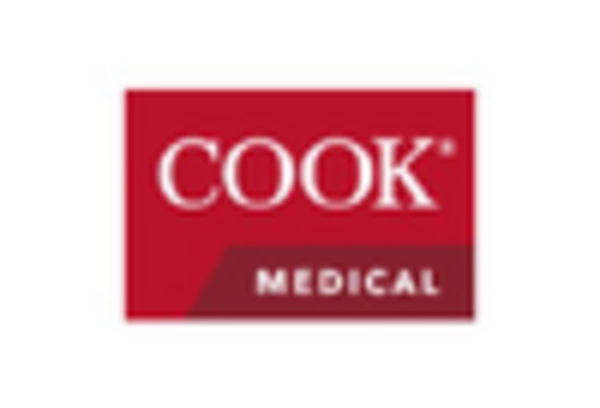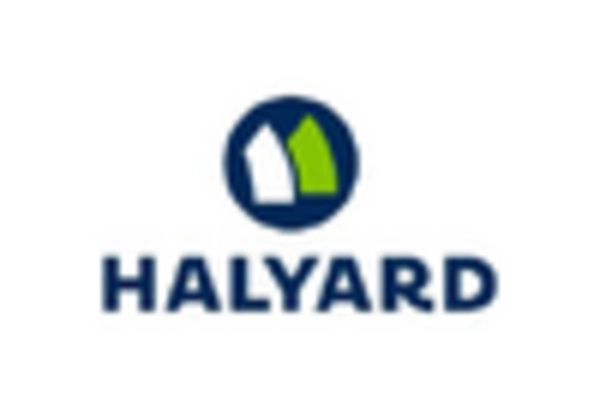Advancements in Medical Technology
Technological innovations in the biliary catheters market are significantly influencing its growth in South America. The introduction of new materials and designs enhances the functionality and safety of biliary catheters, making them more effective for patients. For instance, the development of biodegradable catheters and those with improved biocompatibility is gaining traction. These advancements not only improve patient comfort but also reduce the risk of complications, which is paramount in the treatment of biliary disorders. The market is projected to grow at a CAGR of 8% over the next five years, driven by these technological enhancements.
Increasing Awareness and Education
Rising awareness and education regarding biliary disorders and their treatment options are driving the biliary catheters market in South America. Healthcare campaigns aimed at educating both patients and providers about the importance of early diagnosis and treatment are becoming more prevalent. This increased awareness leads to higher rates of diagnosis and treatment, subsequently boosting the demand for biliary catheters. Furthermore, training programs for healthcare professionals on the use of these devices are being implemented, which enhances their adoption in clinical settings. As awareness continues to grow, the market is expected to expand significantly.
Expansion of Healthcare Infrastructure
The ongoing expansion of healthcare infrastructure in South America is favorably influencing the biliary catheters market. Governments and private sectors are investing heavily in healthcare facilities, which enhances access to advanced medical technologies. This expansion includes the establishment of specialized centers for gastrointestinal disorders, where biliary catheters are frequently utilized. As more hospitals and clinics adopt these technologies, the market is likely to experience substantial growth. The investment in healthcare infrastructure is projected to reach $50 billion by 2027, further supporting the demand for biliary catheters.
Increasing Incidence of Biliary Disorders
The rising prevalence of biliary disorders in South America is a crucial driver for the biliary catheters market. Conditions such as cholangitis, biliary obstruction, and gallstones are becoming more common, leading to a higher demand for effective treatment options. According to health statistics, the incidence of these disorders has increased by approximately 15% over the past five years. This trend necessitates the use of biliary catheters for diagnosis and management, thereby propelling market growth. As healthcare providers seek to improve patient outcomes, the reliance on advanced biliary catheters is likely to expand, indicating a robust market potential in the region.
Growing Demand for Minimally Invasive Procedures
The shift towards minimally invasive surgical techniques is a significant driver for the biliary catheters market in South America. Patients and healthcare providers increasingly prefer procedures that reduce recovery time and minimize surgical risks. Biliary catheters are integral to these minimally invasive approaches, allowing for effective drainage and management of biliary conditions without the need for extensive surgery. This trend is reflected in the rising number of endoscopic procedures, which have increased by 20% in recent years. As the healthcare landscape continues to evolve, the demand for biliary catheters is expected to rise correspondingly.


















Leave a Comment